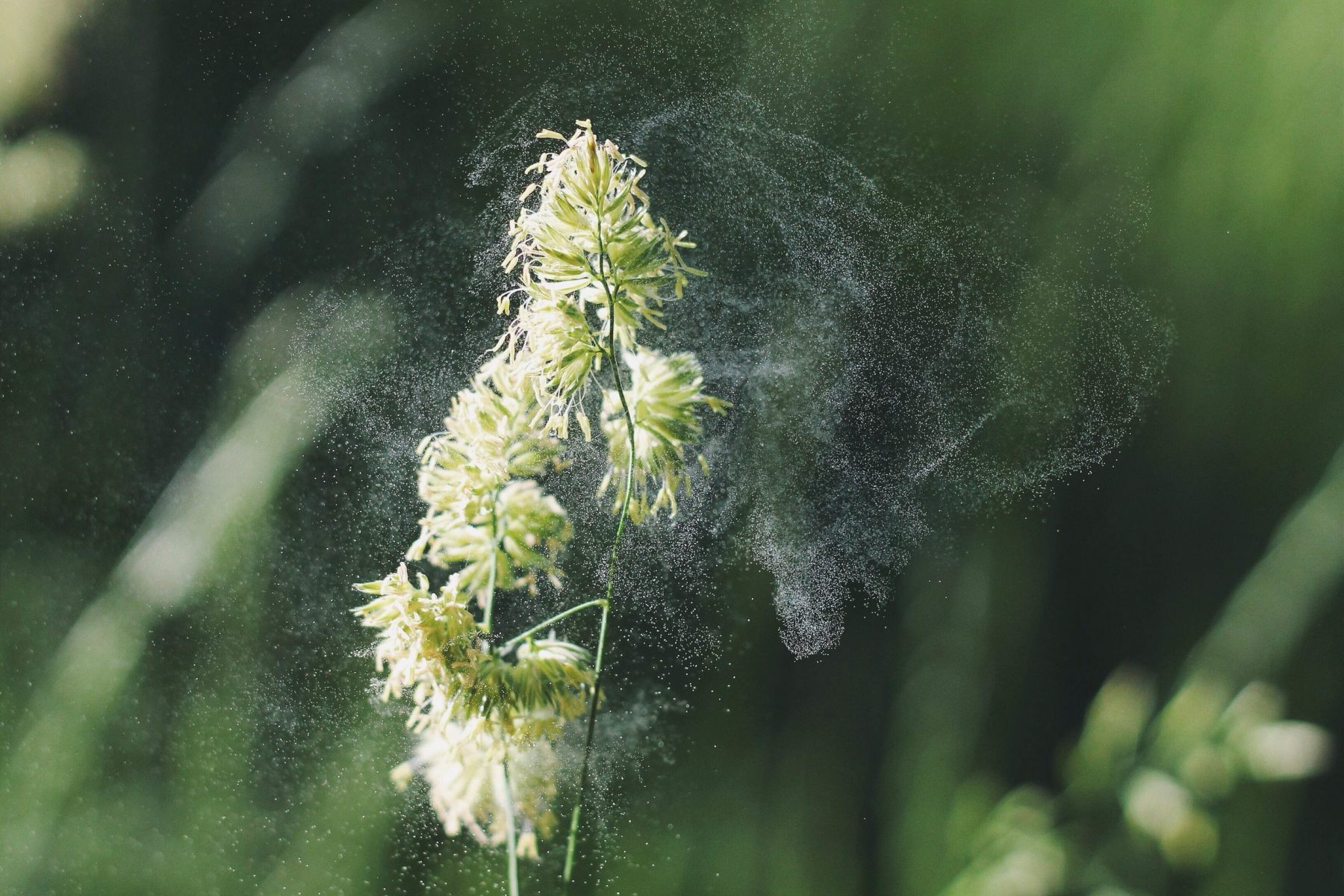
Quercetin is a molecule (technically a polyphenol) that occurs naturally as a pigment in many vegetables, fruits, herbs and even red wines [1]. A few particularly quercetin-rich examples include onions, broccoli, Brussels sprouts, apples, berries and even certain herbs (e.g. evening primrose, Oenothera biennis) [1,2].
Despite being available naturally in many foods, there are sometimes good reasons to consider supplementing quercetin.
Like other polyphenols, quercetin can positively contribute to & support the good functioning of many important biological processes in our bodies.
Scientific evidence suggests that it can:
Certain studies also suggest it can inhibit certain tumours and can help to combat ageing [10,11,12].
Yes! Thanks to its anti-inflammatory properties, quercetin can contribute to the relief of allergy symptoms [4].*
Polyphenols have been shown to inhibit the release of histamine. Quercetin does the job very well by helping to stabilize the membranes of mast cells, which otherwise would release histamine upon detection of allergens [4].
An animal study by Edo et al (2018) suggested quercetin could significantly inhibit nasal symptoms of allergic rhinitis [13].
Put together, these results suggest quercetin could indeed support the remedy of seasonal allergy symptoms.*
Typical dosage of quercetin supplementation ranges from 500mg to 1g per day [2].
Quercetin is generally considered safe to supplement. A recent study on COPD patients supplementing quercetin found it was safely tolerated by up to 2,000mg / day [14].
As usual, please discuss your individual circumstances and appropriate dosage with your healthcare professional.
Despite it’s great properties, the drawback of quercetin is it’s somewhat low bioavailability [15].
Studies have shown that quercetin absorption depend on levels of vitamin C [16,17]. This suggests that supplemented quercetin could become more bioavailable if combined with vitamin C.
We have kept that in mind when putting together our Quercetin C MCT™ formula, making sure to include fat-soluble vitamin C (L-ascorbyl palmitate) as well as MCT powder to create a liposomal-like effect.*
AcuIntegra’s Quercetin C MCT™ formula includes vitamin C & MCT powder to give you superior bioavailability. It’s designed to support the good functioning of anti-oxidation and anti-histamine processes.* Read more about it here.
*These statements have not been evaluated by the Food and Drug Administration. The product is not intended to diagnose, treat, cure or prevent any disease.
Scientific references
[1] Li Y, Yao J, Han C, et al. Quercetin, Inflammation and Immunity. Nutrients. 2016;8(3):167. [PubMed: 26999194]
[2] Jin F, Nieman DC, Shanely RA, Knab AM, Austin MD, Sha W. The variable plasma quercetin response to 12-week quercetin supplementation in humans. Eur J Clin Nutr. 2010;64(7):692-7. [PubMed: 20517329]
[3] Anand david AV, Arulmoli R, Parasuraman S. Overviews of Biological Importance of Quercetin: A Bioactive Flavonoid. Pharmacogn Rev. 2016;10(20):84-89. [PubMed: 28082789]
[4] Mlcek J, Jurikova T, Skrovankova S, Sochor J. Quercetin and Its Anti-Allergic Immune Response. Molecules. 2016;21(5) [PubMed: 27187333]
[5] Kaul TN, Middleton E, Ogra PL. Antiviral effect of flavonoids on human viruses. J Med Virol. 1985;15(1):71-9. [PubMed: 2981979]
[6] Wu W, Li R, Li X, et al. Quercetin as an Antiviral Agent Inhibits Influenza A Virus (IAV) Entry. Viruses. 2015;8(1). [PubMed: 26712783]
[7] Yi L, Li Z, Yuan K, et al. Small molecules blocking the entry of severe acute respiratory syndrome coronavirus into host cells. J Virol. 2004;78(20):11334-9. [DOI: 10.1128/JVI.78.20.11334-11339.2004]
[8] Zahedi M, Ghiasvand R, Feizi A, Asgari G, Darvish L. Does Quercetin Improve Cardiovascular Risk factors and Inflammatory Biomarkers in Women with Type 2 Diabetes: A Double-blind Randomized Controlled Clinical Trial. Int J Prev Med. 2013;4(7):777-85. [PubMed: 24049596]
[9] Ostadmohammadi V, Milajerdi A, Ayati E, Kolahdooz F, Asemi Z. Effects of quercetin supplementation on glycemic control among patients with metabolic syndrome and related disorders: A systematic review and meta-analysis of randomized controlled trials. Phytother Res. 2019;33(5):1330-1340. [PubMed: 30848564]
[10] Hashemzaei M, Delarami far A, Yari A, et al. Anticancer and apoptosis‑inducing effects of quercetin in vitro and in vivo. Oncol Rep. 2017;38(2):819-828. [PubMed: 28677813]
[11] Yang F, Song L, Wang H, Wang J, Xu Z, Xing N. Quercetin in prostate cancer: Chemotherapeutic and chemopreventive effects, mechanisms and clinical application potential (Review). Oncol Rep. 2015;33(6):2659-68. [PubMed: 25845380]
[12] Xu M, Pirtskhalava T, Farr JN, et al. Senolytics improve physical function and increase lifespan in old age. Nat Med. 2018;24(8):1246-1256. [PubMed: 29988130]
[13] Edo Y, Otaki A, Asano K. Quercetin Enhances the Thioredoxin Production of Nasal Epithelial Cells In Vitro and In Vivo. Medicines (Basel). 2018;5(4) [PubMed: 30469393]
[14] Han MK, Barreto TA, Martinez FJ, Comstock AT, Sajjan US. Randomised clinical trial to determine the safety of quercetin supplementation in patients with chronic obstructive pulmonary disease. BMJ Open Respir Res. 2020;7(1) [PubMed: 32071149]
[15] Graefe EU, Wittig J, Mueller S, et al. Pharmacokinetics and bioavailability of quercetin glycosides in humans. J Clin Pharmacol. 2001;41(5):492-9. [PubMed: 11361045]
[16] Guo Y, Mah E, Bruno RS. Quercetin bioavailability is associated with inadequate plasma vitamin C status and greater plasma endotoxin in adults. Nutrition. 2014;30(11-12):1279-86. [PubMed: 25280405]
[17] Kaşıkcı MB, Bağdatlıoğlu N. Bioavailability of Quercetin. Curr Res Nutr Food Sci 2016;4 (Special Issue Conference October 2016). [DOI: 10.12944/CRNFSJ.4.Special-Issue-October.20]

Your opinion will be posted on our website. You can enter your data or report it anonymously, without providing your name, please fill out your gender and age, it will help to give your opinion better. Thank you!